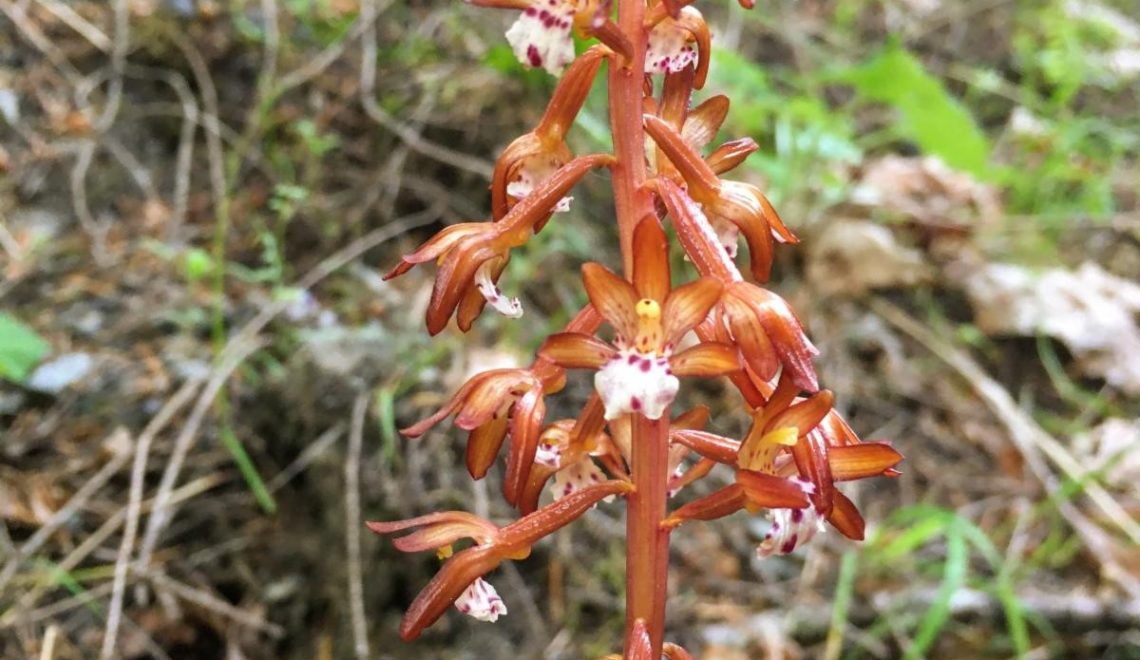
Of Fungus and Flowers
Being a small herb growing under dense stands of tall towering trees presents its challenges. With limited sunlight able to break through the canopy and reach the forest floor, some forest wildflowers have adapted by abandoning photosynthesis, and obtaining nutrition through fungi, which feed from the roots of those tall trees. In forest ecosystems throughout the world, and especially in coniferous forests, many plant species depend on “mycorrhizal” fungi in the soil. The symbiotic relationship they form lets fungi and plants utilize each other’s strengths. The hyphae (fungal threads) enter into the roots of trees, taking advantage of the trees’ ability to make carbohydrates out of water, air and sunlight. The long threads of hyphae also increase the surface area of the trees root system, allowing the trees to absorb more water and minerals from the soil. Mycotrophic (“fungus feeding”) wildflowers, the third party in the relationship, tap into the hyphae and reverse the flow of carbon and other nutrients to meet their own survival needs. Feeding off the fungi, that feeds off the trees, they give nothing back in return. Sometimes referred to as “cheaters” of the forest, these flowers are a fascinating example of adaptive ingenuity in the natural world. Growing leaves becomes a waste of energy if not used for photosynthesis, so over time many of these plants lost the organs they no longer needed, leaving nothing but a stalk of flowers. Often lacking one element we probably all associate with plants, greenness. The orchid (Orchidaceae) and heath (Ericaceae) families include the highest numbers of mycotrophic genera in temperate North America. (Spotted Coralroot Corallorrhiza maculata, a non-green orchid, is pictured above.) Flowering plants, also known as angiosperms, are the most diverse group of land plants, having colonized every conceivable habitat on earth. In each ecosystem, there are different challenges for survival, as well as species that cleverly find solutions. Keep an eye out for these intriguing fungus flowers, and when you find them, remember that like all things in nature, they do not stand alone, but are part of a complex and intricate web of life.  Emerging candystick plant (Allotropa virgata) When the plant pushes up through the soil surface, they even have the appearance of a mushroom poking out of the ground. |

